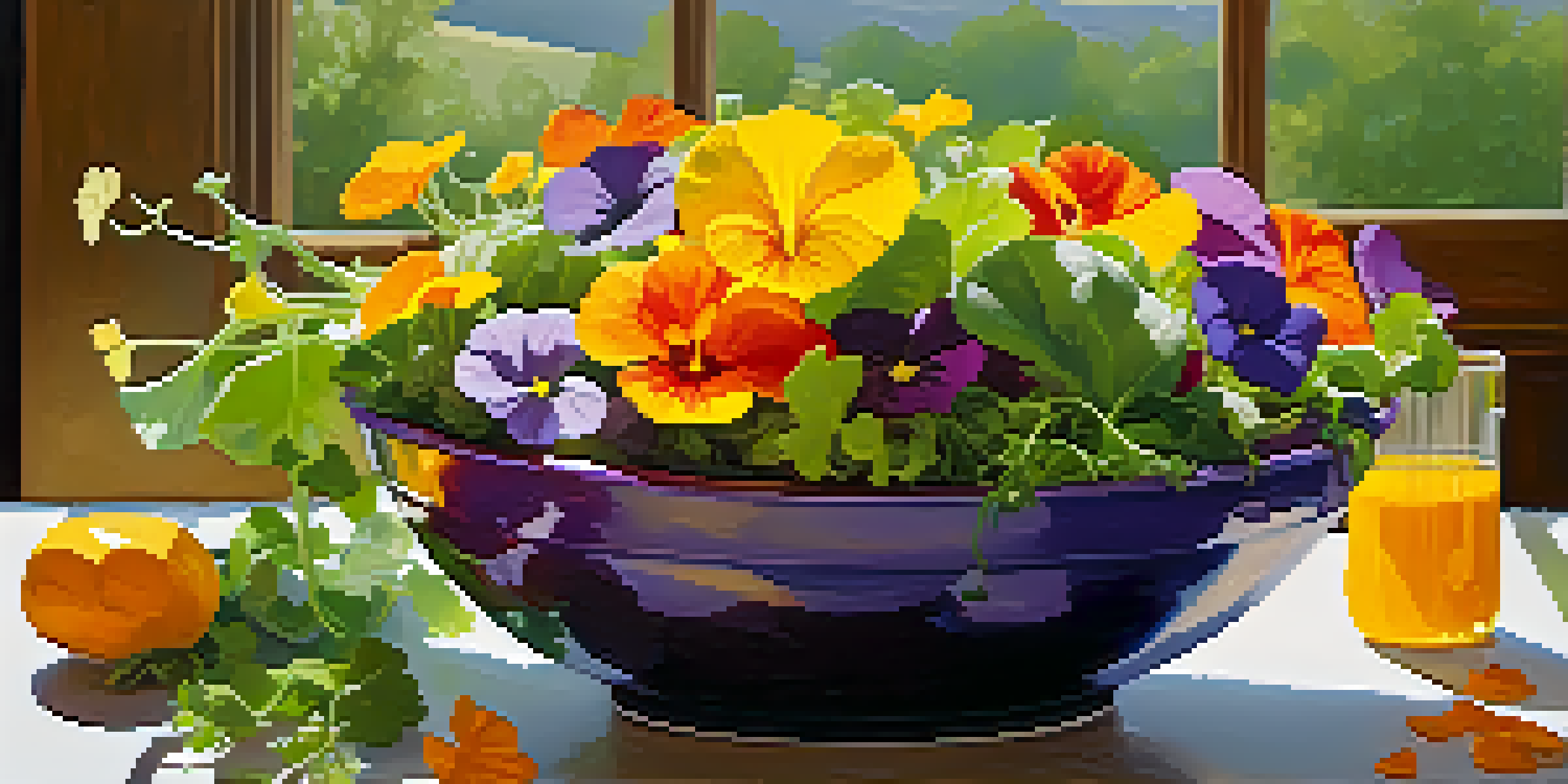The Art of Using Edible Flowers in Vegetarian Cooking

Introduction to Edible Flowers in Cooking
Edible flowers have been a part of culinary traditions for centuries, bringing both beauty and flavor to dishes. From vibrant pansies to aromatic nasturtiums, these blooms can transform your vegetarian meals into a feast for the eyes and palate. Incorporating flowers not only adds color but also introduces unique flavors and nutrients, making your dishes more exciting and nutritious.
Choosing the Right Edible Flowers
When selecting edible flowers, it's essential to know which are safe to eat. Common choices include marigolds, violets, and calendula, each offering distinct tastes and colors. Always ensure that the flowers are pesticide-free and sourced from reputable suppliers, as not all flowers are safe for consumption.
Edible Flowers Enhance Dishes
Incorporating edible flowers adds beauty, unique flavors, and nutrients to your culinary creations.
Flavor Profiles of Popular Edible Flowers
Each edible flower brings its own flavor profile to the table. For instance, nasturtiums have a peppery taste that can replace or complement arugula in salads. On the other hand, lavender offers a sweet, floral note perfect for desserts or infused beverages, allowing you to experiment with various flavor combinations.
Incorporating Flowers into Salads
Salads are a fantastic starting point for using edible flowers. Tossing a handful of colorful petals into your green salad can elevate its aesthetic appeal and taste. Try mixing different flowers with leafy greens, nuts, and a zesty dressing to create a refreshing dish that looks as good as it tastes.
Choose Safe Edible Flowers
Selecting pesticide-free flowers like marigolds and violets ensures safe consumption and vibrant flavors.
Using Flowers in Main Dishes
Beyond salads, edible flowers can enhance main courses too. Think of adding edible blossoms to pasta dishes or grain bowls for a touch of elegance. For a unique twist, consider using flower-infused oils or sauces that can elevate the overall flavor profile of your vegetarian creations.
Creating Beautiful Floral Garnishes
Garnishing your dishes with edible flowers can turn a simple meal into a masterpiece. A few strategically placed petals can add a pop of color and intrigue, enticing your guests even before they take a bite. Experiment with different arrangements and combinations to find the perfect floral garnish for your culinary creations.
Creative Uses for Edible Flowers
Edible flowers can be used in salads, main dishes, and infusions, offering various ways to elevate your meals.
Making Edible Flower Infusions
Infusions are another excellent way to incorporate edible flowers into your cooking. You can create floral teas, syrups, or flavored oils, each offering a unique taste experience. These infusions can serve as a base for dressings, marinades, or even cocktails, broadening the scope of your culinary creativity.
Conclusion: Embrace the Beauty of Edible Flowers
Incorporating edible flowers into vegetarian cooking is not just about aesthetics; it's about enhancing flavors and experiences. By experimenting with different types of flowers, you can discover new tastes and presentations that excite the palate. So, why not embrace the beauty of edible flowers and elevate your vegetarian meals to new heights?